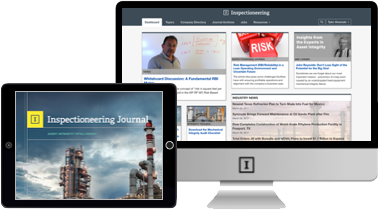According to a study presented at the 2004 European Federation of Corrosion, approximately 35 cents of every maintenance dollar is spent on fixed equipment. Of this spend, 55 percent is spent on piping—which is equivalent to about 20 cents of every maintenance dollar.
Due to lack of guidance and resource attention, in addition to inaccurate data, many facilities struggle to develop and maintain asset strategies for piping. This leads us to ask the question: What does it really take to have successful piping strategies?
Our friends at PinnacleART have put together a four-step process to develop effective and efficient asset strategies for piping. This approach can optimize cost, refocus resources, and reduce risk.
This process should help you develop a successful piping strategy that will enable you to answer the following questions:
- Are you confident that the money you are spending on inspection is spent on the right things for the right reasons?
- Do you know where your piping assets are most likely to fail and why?
- Do you have all the information you need to make good decisions?
Step 1: Understand Your Current State
Whether your facility has an existing piping integrity program or is looking to successfully implement a new program, it is important to gather and organize required data such as Piping and Instrumentation Diagrams (P&IDs), isometrics, and existing analyses, and determine the state of your record system (Inspection Data Management System [IDMS] or other database). This will allow your team to efficiently and correctly complete all further analysis.
At this stage it is also critical to...

















Comments and Discussion
There are no comments yet.
Add a Comment
Please log in or register to participate in comments and discussions.